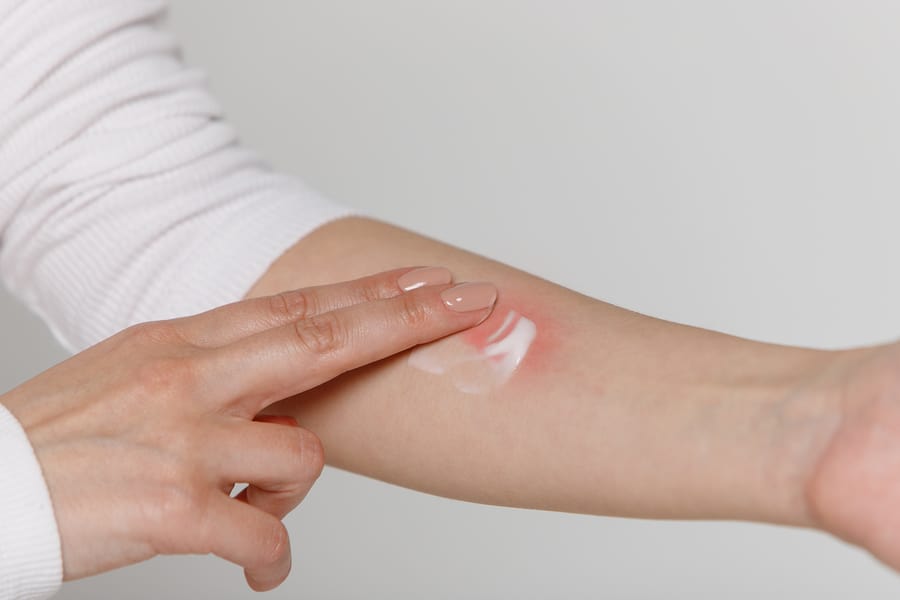READY TO GET STARTED?
REQUEST A FREE ESTIMATE
Fill out the form below or call (888) 466-7849 for a free, no-obligation estimate.

If you spend any time outside, especially in the Southern states, there is a good chance you will get a mosquito bite. The female mosquito (males don’t bite) feed on blood. Once they bite they cause a minor allergic reaction. You will most often see the skin raise and turn red. The itch comes from the allergic reaction to the saliva, an anticoagulant, that the mosquito injects while sucking your blood.
What are the tiny red bugs crawling around my windows?
This is a common question that we get in early spring and late fall. Clover mites are found in warm, sunny places which is why you usually see them around your windows and crawling on your curtains. Clover mites are smaller than the tip of a pencil which allows them to fit into the smallest cracks and crevices around a structure. They are oval shaped with 8 legs. Their 2 front legs are longer than the rest and protrude forward which can be confused with antennae.
Clover mites can be alarming to homeowners because they gather in large numbers but there is no need for alarm. Clover mites do not bite or carry diseases, however they can cause skin irritation to some with sensitive skin. (These are not to be confused with chiggers which look similar but get into the skin and itch.) They do not damage furniture or pursue your food. Clover mite eggs lay dormant in the summer months and hatch in temperatures of 85 F or below. They are attracted to warm, sunny places which leads them to the windows in your home. Clover mites are often identified by the red stain they leave once they have been squashed. The red substance is the pigment in their color, not their blood. Grass and clovers are their main source of food.
There are simple ways to get rid of clover mites in your home. The best way is to vacuum them up. As with any vacuumed pest, make sure that you dispose of the bag immediately in an outdoor trash can. Disposing of the bag is always recommended but is especially an issue when it comes to clover mites because they are so small and can escape from the bag into your home. Another way to get rid of clover mites is to place sticky traps around your windows. As always, prevention is your best option. Clover mites feed on fertilized lawns, so if you are seeing an infestation cut back on the fertilizer. Remove grass that has direct contact to your structure. Instead, use soil, gravel, or mulch because clover mites have difficulty moving on bare, loose terrains. Make sure all window screens are tight fitting. Seal any cracks around the outside of the structure and use weather stripping on entrance areas.
If you are having a consistent problem with clover mites or other pests, it’s best to call Northwest Exterminating. We will ensure that your issue is identified and a customized plan is created for treatment of clover mites.
Are these small red bugs showing up in your home?